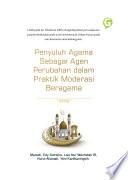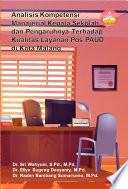
revisi akuntasi suatu pengantar
- Judul : revisi akuntasi suatu pengantar
- Pengarang : SOEMARSO S.R.,
- Penerbit : Salemba empat
- DDC : Accounting
- Bahasa : Indonesia
- Tahun : 2002
- Halaman : 433
-
Ketersediaan :
010039 Tersedia di Library of UI BBC

| 010039 |
Tersedia di Library of UI BBC
|

Buku "Digital Marketing : Optimalisasi Strategi Pemasaran Digital" adalah panduan komprehensif bagi para pemilik bisnis dan pemasar yang ingin memanfaatkan potensi pemasaran digital untuk mempromosikan produk atau layanan mereka secara global. Buku ini membahas tentang konsep dasar pemasaran digital, termasuk pengenalan tentang Platform Digital Marketing, Content Marketing, Influencer marketing, Selain itu, buku ini juga memberikan tips dan strategi yang dapat membantu meningkatkan efektivitas kampanye pemasaran digital. Dalam buku ini, pembaca akan belajar cara membuat kampanye iklan yang efektif, menentukan target audiens yang tepat, mengembangkan konten yang menarik, memanfaatkan teknik marketing untuk meningkatkan profit, dan memilih platform media sosial yang tepat untuk mencapai tujuan pemasaran. Dengan membaca buku ini, Anda akan memiliki pemahaman yang lebih baik tentang konsep-konsep inti dalam pemasaran digital dan bagaimana menerapkannya dengan sukses dalam dunia bisnis yang semakin terhubung secara digital.
Buku "Digital Marketing : Optimalisasi Strategi Pemasaran Digital" adalah panduan komprehensif bagi para pemilik bisnis dan pemasar yang ingin memanfaatkan potensi pemasaran digital untuk mempromosikan produk atau layanan mereka secara ...

Language, cognition, and memory are traditionally studied together prior to a researcher specializing in any one area. They are studied together initially because much of the development of one can affect the development of the others. Most books available now either tend to be extremely broad in the areas of all infant development including physical and social development, or specialize in cognitive development, language acquisition, or memory. Rarely do you find all three together, despite the fact that they all relate to each other. This volume consists of focused articles from the authoritative Encyclopedia of Infant and Early Childood Development, and specifically targets the ages 0-3. Providing summary overviews of basic and cutting edge research, coverage includes attention, assessment, bilingualism, categorization skills, critical periods, learning disabilities, reasoning, speech development, etc. This collection of articles provides an essential, affordable reference for researchers, graduate students, and clinicians interested in cognitive development, language development, and memory, as well as those developmental psychologists interested in all aspects of development. Focused content on age 0-3- saves time searching for and wading through lit on full age range for developmentally relevant info Concise, understandable, and authoritative—easier to comprehend for immediate applicability in research
This volume consists of focused articles from the authoritative Encyclopedia of Infant and Early Childood Development, and specifically targets the ages 0-3.

Penyuluh Agama Sebagai Agen Perubahan dalam Praktik Moderasi Beragama Penulis : Marsidi, Edy Sutrisno, Lies Nur Wachidah W, Nurul Allamah, Yeni Kartikaningsih Ukuran : 14 x 21 cm ISBN : 978-623-5728-18-6 Terbit : November 2021 Sinopsis : Sebagai penyuluh agama harus penyampaikan pesan yang damai karena Islam adalah agama yang damai, aman, dan moderat. Al-Qur’an sebagai petunjuk telah menjelaskan hal tersebut secara jelas. Konsep dan perilaku ekstrem sangat bertentangan dengan pesan damai yang dibawa Islam. Sikap radikal, ekstrem, dan liberal bertentangan dengan spirit tawasuth. Sikap seimbang (tawazun) dijunjung tinggi dalam Islam. Tidak ekstrem kiri (liberal) maupun ekstrem kanan (radikal). Agen perubahan memiliki tugas untuk menciptakan perubahan kearah kemandirian terutama bagai penyuluh agama Islam. Moderasi adalah paham keagamaan yang mengejewantahkan ajaran agama yang sangat esensial. Ajaran yang tidak hanya mementingkan hubungan baik kepada Allah, tapi juga yang tak kalah penting adalah hubungan baik kepada seluruh manusia. Selain itu, moderasi beragama tercerminkan dalam sikap yang tidak mudah untuk menyalahkan apalagi sampai pada pengkafiran terhadap orang atau kelompok yang berbeda pandangan. Lebih pada itu, Moderasi lebih mengedepankan persaudaraan yang berlandaskan pada asas kemanusiaan, bukan hanya pada asas keimanan atau kebangsaan. Happy shopping & reading Enjoy your day, guys
Penyuluh Agama Sebagai Agen Perubahan dalam Praktik Moderasi Beragama Penulis : Marsidi, Edy Sutrisno, Lies Nur Wachidah W, Nurul Allamah, Yeni Kartikaningsih Ukuran : 14 x 21 cm ISBN : 978-623-5728-18-6 Terbit : November 2021 Sinopsis : ...

What are the secrets to unlocking student success? And what can teachers do to get better at helping students develop deep understanding of content, attain higher-order thinking skills, and become secure, confident, and capable learners? In this book, teacher and professor Jeff Marshall showcases how teaching with intentionality answers these questions. Specifically, he introduces the Teacher Intentionality Practice Scale (TIPS), a framework for both supporting and measuring effective teaching. Taken together, the framework’s seven TIPs provide a research-based, classroom-tested guide to help teachers * create coherent, connected lessons; * use strategies and resources, including technology, that truly enhance learning; * organize a safe, respectful learning environment; * develop challenging and rigorous learning experiences; * promote interactive, thoughtful learning; * nurture a creative, problem-solving classroom culture; and * deliver feedback and formative assessment that inform teaching and learning. Marshall’s needs-assessment instrument can help teachers, working independently or in a cohort, determine the best starting point for improving their practice. Practical, straightforward rubrics for each TIP describe the various levels of teacher proficiency. Based on his own teaching experience and observations in hundreds of classrooms, Marshall also offers action tips for each framework component and a list of resources for further study. Written for teachers and leaders at all levels and in all content areas, The Highly Effective Teacher is a guidebook for thoughtful, intentional teaching with one goal: success for all students, in every classroom.
In this book, teacher and professor Jeff Marshall showcases how teaching with intentionality answers these questions.

This book addresses three factors that are important foundations of TQM: tools and techniques that people are trained to use to indentify and solve quality problems, customers as the focus of TQM, and the TQM culture based on certain values and leadership vision.
This book addresses three factors that are important foundations of TQM: tools and techniques that people are trained to use to indentify and solve quality problems, customers as the focus of TQM, and the TQM culture based on certain values ...

Buku Manajemen Pemasaran ini disusun oleh para akademisi dan praktisi dalam bentuk buku kolaborasi. Walaupun masih jauh dari kesempurnaan, tetapi kami mengharapkan buku ini dapat menjadi referensi atau bahan bacaan dalam menambah khasanah keilmuan khususnya mengenai ilmu Manajemen Pemasaran. Sistematika penulisan buku ini diuraikan dalam tigabelas bab yang memuat tentang Konsep Dasar Manajemen Pemasaran, Perencanaan Pemasaran, Sistem Informasi Pemasaran, Segmentasi Pasar, Ekuitas Merek, Strategi Produk, Strategi Penetapan Harga, Manajemen Saluran Distribusi, Bauran Pemasaran, Analisis Perilaku Konsumen, Menciptakan Kepuasan Pelanggan, Pasar Global, serta bab terakhir mengenai Komunikasi Pemasaran.
Buku Manajemen Pemasaran ini disusun oleh para akademisi dan praktisi dalam bentuk buku kolaborasi.

Buku Mengenai Analisis Kompetensi Manajerial Kepala Sekolah dan Pengaruhnya Terhadap Kualitas Layanan Pos PAUD di Kota Malang
Buku Mengenai Analisis Kompetensi Manajerial Kepala Sekolah dan Pengaruhnya Terhadap Kualitas Layanan Pos PAUD di Kota Malang

Buku ini berjumlah 7 (tujuh) bab terdiri dari Bab 1 Model dan Strategi Meningkatkan Keunggulan Daya Saing Batik Tulis Tanjung Bumi Bangkalan Menuju Go International, Bab 2 Pemberdayaan Pengrajin Industri Kreatif Melalui Peningkatan Minat Kalangan Milenial dan Gen-Z Terhadap Produk Batik, Bab 3 Inklusi Keuangan UMKM Batik : Masalah dan Peluang, Bab 4 Penggambaran Potensi Alam Lumajang Menjadi Motif Batik sebagai Elemen Penciri Bagi Penominasian Warisan Budaya Tak Benda, Bab 5 Pengembangan Batik Tulis Gentongan Tanjung Bumi bangkalan Madura, Bab 6 Penguatan Usaha Batik tulis wangsa Singhasari Sebagai Produk Unggulan daerah Kabupaten Malang, dan Bab 7 Ektrakulikuler Batik Bagi Siswa Tingkat Sekolah Dasar di SD Muhammadiyah 09 Kota Malang
Karakter perkembangan teknologi adalah peran kemajuan teknologi yang mampu menjangkau masyarakat secara luas tanpa ... UMKM dimana hanya sedikit saja UMKM yang mampu mengatasi masalah permodalannya dengan menggunakan kredit perbankan.

CHAPTER I Introduction THE HE LARGE SUMS OF MONEY - local , State , and Federalallocated for school construction throughout the Nation have placed an awesome responsibility on those concerned with the planning of educational facilities ...